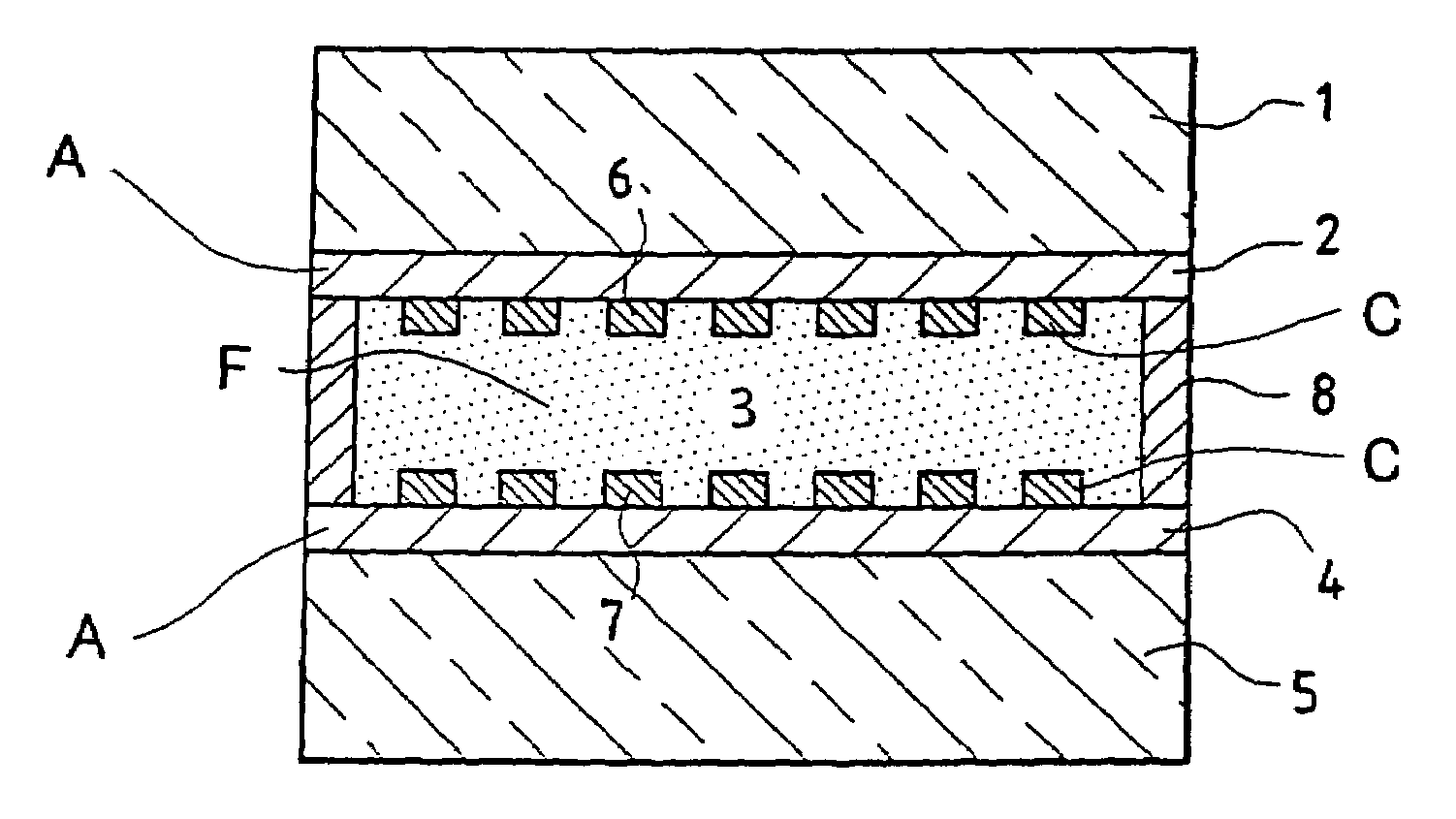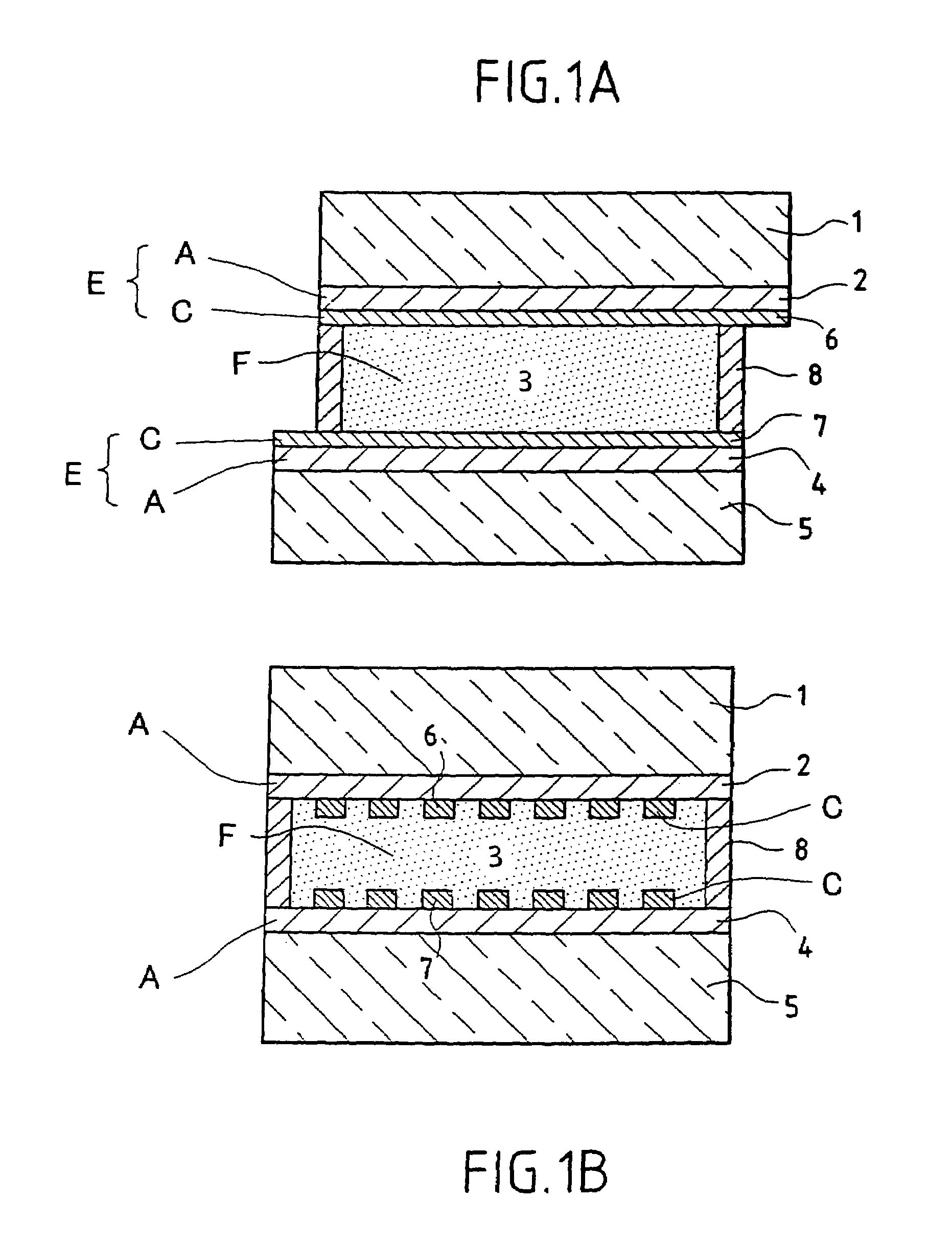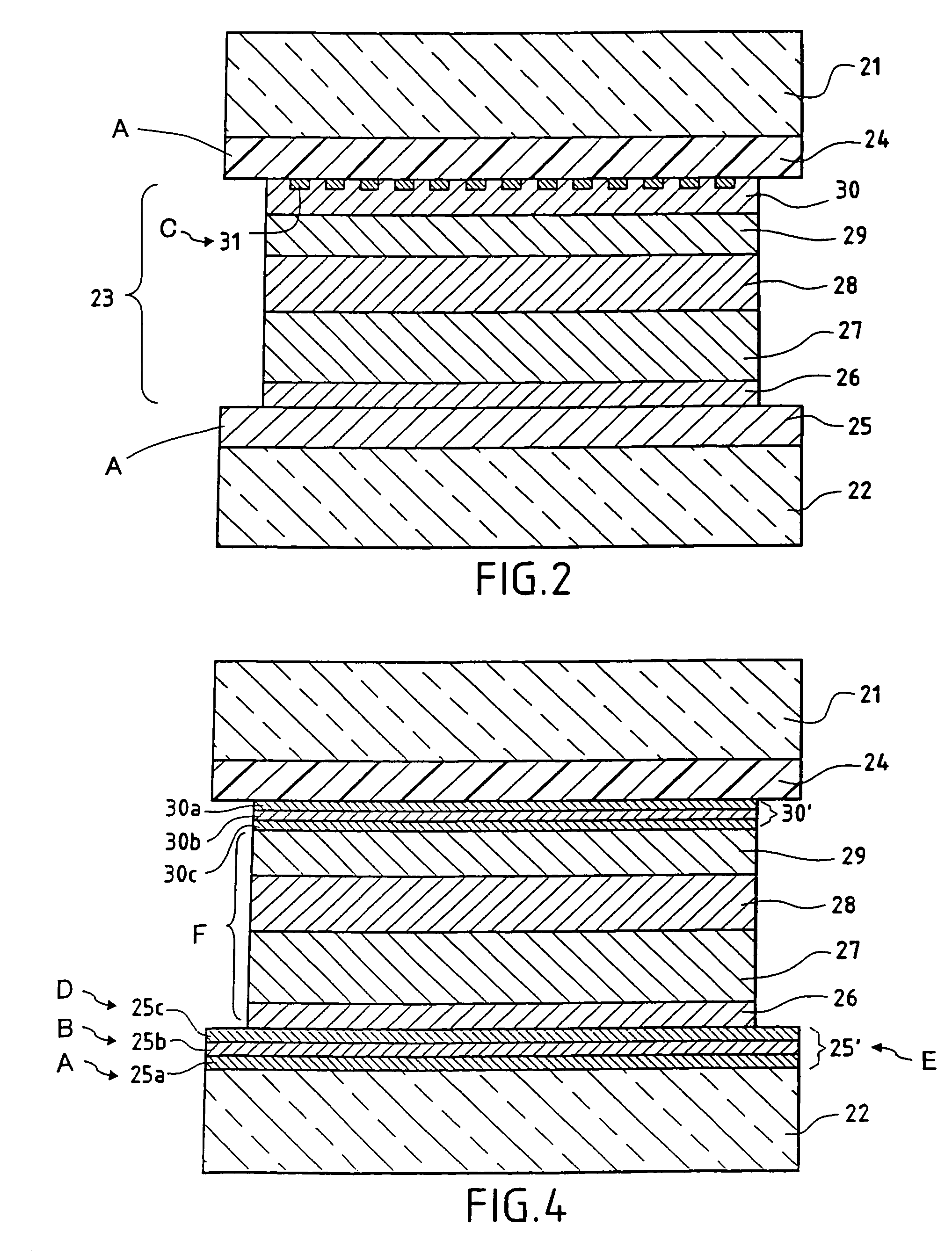Electrochemical device, such as an electrically controlled system with variable optical and/or energy properties
a technology of electrical control system and electrochemical device, which is applied in the direction of electrical apparatus, coatings, instruments, etc., can solve the problems of increasing the thickness of the layer a to heighten the conductivity, and achieve the effect of ensuring the continuity more effectively
- Summary
- Abstract
- Description
- Claims
- Application Information
AI Technical Summary
Benefits of technology
Problems solved by technology
Method used
Image
Examples
example 1
[0072]FIGS. 1a and 1b show a transverse section of a viologenic system using an “active” layer 3 of the type described in the abovementioned patent application EP-0 612 826 and based on polymer and arranged between two clear silica-soda-lime glass substrates 1 and 5 of 4 mm thickness. (FIG. 1b is a view taking a section at right angles to FIG. 1a).
[0073]The two substrates 1 and 5, each coated in advance with an SnO2:F layer 2 and 4 and laid down in a known manner by CVD have each then been provided with a network 6 and 7 of conducting strips, using a silver paste and the well known technique of screen printing. The conducting strips have a width of 0.3 mm and are essentially parallel one to the other and separated one from the other by a distance of about 2 mm. A peripheral seal 8 ensures that the system does not leak.
[0074]There are therefore two multicomponent electrodes combining a screen-printed conducting network and a doped oxide layer. The layers of SnO2:F may be replaced by ...
example 2
[0075]FIG. 2 represents an embodiment of electro-chromic glazing according to the invention: this is electrochromic glazing with a laminated structure and two panes of glass, in a configuration adapted, for example, for use as glazing in a car sun-roof: two clear panes of glass 21 and 22 are shown, with an electrochromic functional system 23 of “all-solid” type formed by the stack of functional layers which follows, and a sheet of polyurethane PU 24 (the sheet of PU may be replaced by a sheet of ethylene vinyl acetate EVA or of polyvinyl butyral PVB):[0076]a first 400 nm electrically conducting layer 25 of 30 SnO2:F, laid down on the glass 22 using CVD,[0077]a first 40 nm layer 26 of anodic electrochromic material made of (hydrated) iridium oxide IrOxHy (which may be replaced by a layer of hydrated nickel oxide),[0078]a 100 nm layer 27 of tungsten oxide,[0079]a second 100 nm layer 28 of hydrated tantalum oxide,[0080]a second 370 nm layer 29 of cathodic electrochromic material based ...
example 3
[0087]FIG. 4 shows another version of “all-solid” electrochromic glazing according to the invention. As in FIG. 2 and Example 2, two panes of glass 21 and 22 are seen, combined by lamination with the aid of a film 24 made of PU (or PVB: polyvinyl butyral), the layer 26 made of anodic electrochromic material, the layer 29 made of cathodic electrochromic material, these being separated by the layers 27 and 28, forming the electrolyte. By way of contrast, the electrode 25′ arranged on the glass pane 22 is now formed by a stack of layers comprising a 34 nm layer 25 (a) of SnO2 on which there is a 10 nm layer 25(b) of silver, on which there is in turn a 50 nm layer 25(c) of ITO. This three-layer structure is obtained by cathodic sputtering assisted by a magnetic field, in a known manner. The layer 25(b) of silver is optionally provided with a thin layer 25(d) of metal intended to protect it during laying down of the layer 25(c) of ITO, when this latter is laid down by a reactive method i...
PUM
| Property | Measurement | Unit |
|---|---|---|
| length | aaaaa | aaaaa |
| length | aaaaa | aaaaa |
| diameter | aaaaa | aaaaa |
Abstract
Description
Claims
Application Information
 Login to View More
Login to View More - R&D
- Intellectual Property
- Life Sciences
- Materials
- Tech Scout
- Unparalleled Data Quality
- Higher Quality Content
- 60% Fewer Hallucinations
Browse by: Latest US Patents, China's latest patents, Technical Efficacy Thesaurus, Application Domain, Technology Topic, Popular Technical Reports.
© 2025 PatSnap. All rights reserved.Legal|Privacy policy|Modern Slavery Act Transparency Statement|Sitemap|About US| Contact US: help@patsnap.com



